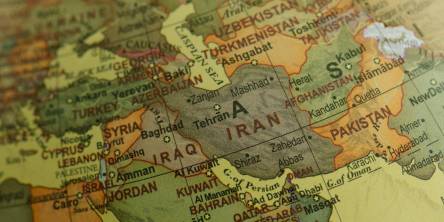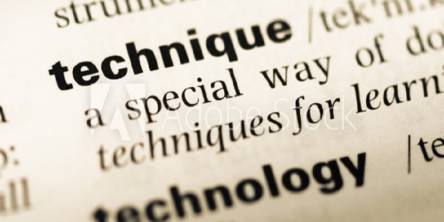The Future of Communication: How AI Language Translation is Breaking Down Barriers

As we forge deeper into the digital era, AI language translation is rapidly becoming a pivotal force in global communication, creating unprecedented connections across cultures. This technological advancement is not just reshaping interactions but also fostering global business and education by providing tools that overcome language barriers more seamlessly than ever before.
The numbers back this up: The global machine translation market hit $1.2 billion in 2023 and is projected to grow to $5.13 billion by 2036. This represents a strong annual growth rate of 12.6%, underscoring the increasing reliance on AI for fast, effective, and precise translation across different industries.
The Impact of AI on Language Translation
AI has drastically changed how language translation works by improving both accuracy and efficiency. Traditional methods often relied on simple word replacements, while AI-powered systems analyze extensive text databases to grasp context, colloquial expressions, and even slang.
This learning capability enables AI language translation software to generate accurate and contextually appropriate translations, resembling human understanding and fluency. Furthermore, AI tools continually enhance their performance by refining algorithms with more data, resulting in increasingly precise translations. They also excel in specialized fields, delivering accurate translations suitable for legal, medical, and scientific documents.
Overcoming Linguistic Challenges
AI excels in bridging gaps between widely spoken languages and less common ones. Traditional translation services might overlook these less prominent languages due to the cost and rarity of skilled human translators. However, AI can quickly adapt through machine learning techniques, accessing and processing the unique linguistic structures and vocabularies needed to support these languages.
This ability is crucial for preserving diverse cultures and ensuring global access to information in any language. The rise of AI translators ensures that smaller languages don't fade away, supporting the survival of their linguistic traditions. Moreover, this inclusiveness encourages more international cooperation and mutual understanding.
Real-Time Translation and Its Applications
AI-powered instant translation technology transforms communication across languages. Whether at global conferences, business gatherings, or casual tourist encounters, AI ensures immediate comprehension and seamless interaction. By employing sophisticated speech recognition and translation algorithms, this technology swiftly provides precise translations, enabling fluid conversations devoid of language obstacles.
Moreover, real-time translation enhances educational settings by granting students worldwide access to lectures and educational content in their native languages. Additionally, it enriches entertainment experiences by enabling audiences to enjoy films, shows, and performances in various languages without interruptions.
AI in Multilingual Content Creation
In today's global business landscape, companies no longer need to painstakingly create numerous versions of content in different languages to connect with diverse audiences. AI simplifies this by automatically producing precise and culturally fitting content across various languages.
This accelerates communication and maintains uniformity and excellence in brand communication worldwide. It empowers marketers to craft messages tailored precisely to diverse cultural settings, boosting engagement and impact. AI's functionalities also benefit customer support by providing immediate and accurate language translations for inquiries, enhancing user experience and satisfaction across multiple regions.
Ethical Considerations and Challenges
As AI becomes more integrated into communication, it presents several ethical challenges. Privacy becomes a major concern, especially in handling personal and sensitive data during translation, which requires strict safeguards. Furthermore, although AI can interpret and translate languages, preserving the delicate cultural nuances in translations demands careful attention to prevent misunderstandings or cultural insensitivity.
There is also the risk of AI perpetuating or creating biases if not properly trained with diverse data sets. Additionally, maintaining transparency in AI processes is crucial, as users must understand how their information is used and how translations are generated.
The Role of AI in Globalization
AI translation tools are speeding up globalization by making it easier for businesses and organizations to operate in multiple countries. They provide precise translations that help companies handle international markets, including legal papers, product details, marketing efforts, and customer service.
This not only boosts economic growth but also improves mutual understanding and cooperation among different global communities. It also lets smaller businesses and startups enter international markets more affordably, leveling the playing field for global opportunities. Plus, AI's knack for adjusting to new languages means companies can react swiftly to global developments and trends.
Future Trends in AI Translation Technology
Looking ahead, AI translation technology will experience further advancement. Future progress aims to improve the understanding of context and integrate with other AI systems for more nuanced translations. Expect enhancements in recognizing regional dialects, handling jargon, and interpreting idiomatic expressions. There is also potential for AI to convey tone and emotion more effectively.
These developments will enhance cross-cultural communication by improving accuracy and adaptability. AI systems will likely learn in real time from interactions, constantly refining their capabilities. Furthermore, integrating AI translation with augmented and virtual reality platforms could transform multilingual interactions in immersive settings.
Final Thoughts
AI-driven language translation is effectively dismantling longstanding obstacles to cross-cultural communication. As this technology progresses, it offers a future where language barriers cease to block interaction.
Adopting these advancements will not only enhance global connectivity but also foster a deeper understanding and appreciation of diverse cultures worldwide.
Similar Articles
Learn the key differences between formal and informal Persian, including tone, vocabulary, grammar, and their usage in various social contexts.
Does the child in your life speak more than one language? Do you notice them having trouble navigating between the two? How does bilingualism play into speech-language pathology?
Early exposure to English language learning provides you a world of intellectual and social potential. Although it's well known that English is a universal language, you might be surprised by the advantages of learning it at a young age. A child's future can be shaped by early exposure to English in unexpected ways, from confidence-boosting to cognitive development.
Learning to greet someone in a new language is often the first step towards fluency. Understanding how to say hello in Italian is essential due to the language's melodic and expressive nature.
If you are a healthcare provider or employed in the department, you are more likely than not to understand the significance of effective communication particularly in the context of medical information dissemination across various languages and cultures.
Spanish verbs Both the pillar of a language and the main obstacle to speaking it. Many students are lost during their learning, blocked by the Spanish conjugation, sometimes complex for an English speaker. To break the deadlock, these 10 tips are here to finally master the conjugation of this beautiful language, Spanish.
The translation process consists of understanding the meaning of a text written in a language of origin and transferring it to a target language while retaining the same meaning.
English is an international language and it has become important for everyone to learn and gain mastery over it because it offers plenty of advantages in one’s own personal and professional life.
Matters regarding legal aid translation are sensitive in that they don’t need any barriers caused by language problems, poor translations, or interpretations. The system of providing free advice about the law and practical help with legal matters for individuals who are unable or poor to pay for legal aid services is what we refer to as legal aid.









